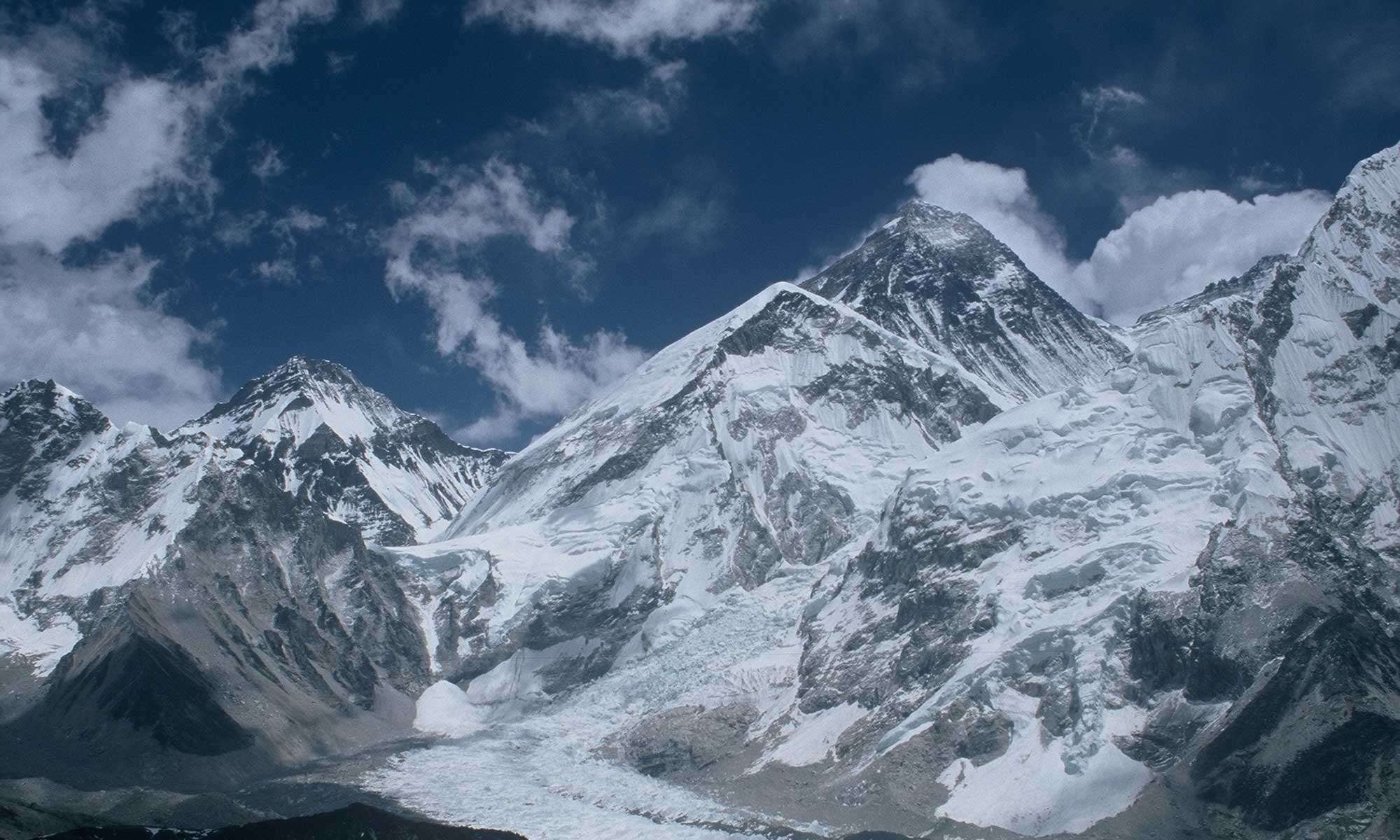
Does the cursed climate change, which is causing problems worldwide, perhaps also have a positive side effect on Mount Everest? A team led by climate scientist Tom Matthews from Loughborough University in England has calculated that a global warming of two percent compared to the pre-industrial age means that at the highest point on earth, an average of around five percent more oxygen can reach the lungs due to higher air pressure. Great, some mountaineers who want to climb Everest without bottled oxygen might think. But be careful! It is not that simple. There is a catch.
Tom Matthews was part of an Everest scientific expedition in spring 2019, in which more than 30 researchers from various fields took part. Matthews’ team installed weather stations along the normal route on the Nepalese south side of the mountain: at the base camp, in Camp 2 at 6,400 meters, on the South Col at almost 8,000 meters and even on the so-called “Balcony”, a small plateau at 8,430 meters. The data subsequently received from there was evaluated in the same way as Everest weather data from the past 40 years.
Virtually 750 meters higher
The scientists point out that although more oxygen availability can be expected on the summit, the pressure conditions vary considerably during the course of the year. As a result, a mountaineer at the lowest determined air pressure virtually has to climb almost 750 meters higher than someone who is on the way at the highest determined pressure – because of the different amounts of oxygen that are pressed into the lungs and thus also affect performance.
The approximately 200 successful Everest ascents without bottled oxygen have also been evaluated. Most of them (81.7 percent) were achieved in May, the second most in October (11.1 percent) – both of these months experience summit pressures above the annual mean (331 hectopascal) approximately three-quarters of the time. Ang Rita Sherpa’s summit success in April 1985 recorded the lowest air pressure to date (329 hPa), Reinhold Messner’s solo ascent in August 1980 the highest (340 hPa). Virtually, the Sherpa had to climb about 150 meters higher than the South Tyrolean.
Don’t just pay attention to the wind!
According to the study, pressure changes are much higher in winter – and can occur at very short notice. During the ascent, which usually lasts four days, winter conditions can go “from not dissimilar to a typical May day (“plenty” of O2 – relatively speaking), to extremely low O2 availability (right on the cusp of humans’ physiological limit – and extremely challenging/dangerous),” Tom Matthews writes to me: “To protect themselves, mountaineers in winter climbing without supplemental oxygen should keep a close eye on forecasts of air pressure at the summit.” This has not yet become routine, says Tom: “Mountaineers usually decide whether to push for the summit based on the wind speed, but we have shown that the lowest pressure (and therefore lowest oxygen availability) does not generally coincide with the strongest winds.”
Subtle advantage
Matthews does not believe that climate change will make it easier to climb Mount Everest without breathing mask. The fact that more oxygen is available is “subtle in comparison to the daily changes due to weather,” writes the British scientist, who himself climbed to the Balcony at 8,430 meters in spring 2019: “In any case, climate warming may, through other pathways, make Mount Everest harder (or more dangerous) to climb.”
For example, warmer temperatures can lead to more snowfall at high altitude and thus increase the danger of avalanches. The ice in the Khumbu Icefall can flow faster, the risk of seracs collapsing or of mountaineers’ anchors melting out of the ice can increase. And on some slopes, the snow can disappear and the rock protrude, making it harder to climb, says Tom Matthews: “Much of this is speculation, but it is certainly plausible that climbing Everest will get harder (or more dangerous) as the climate warms – not easier.”
P.S.: For whatever reason, the weather station on the Balcony stopped transmitting data in January 2020. The other four weather stations’ data are available here.


